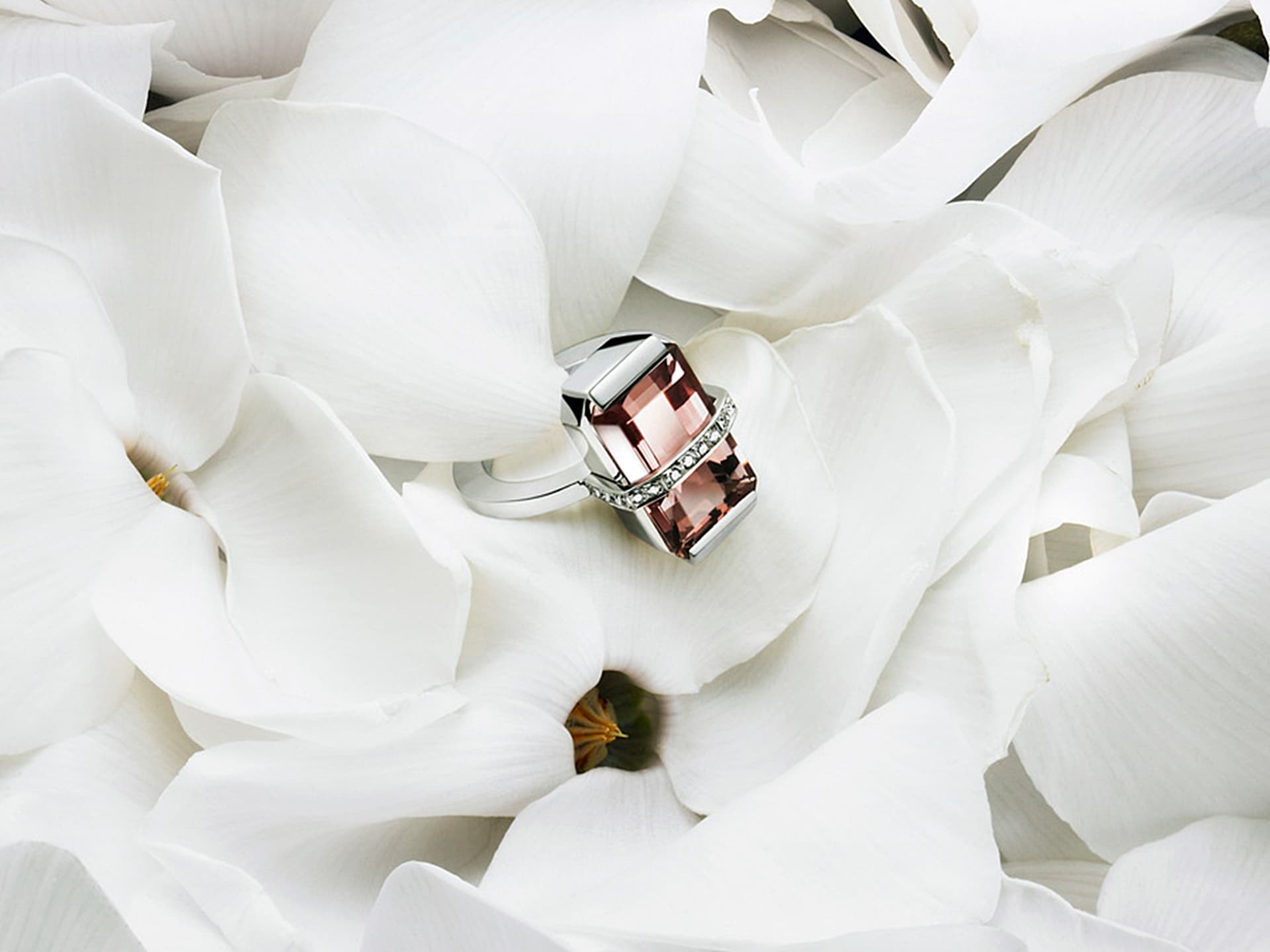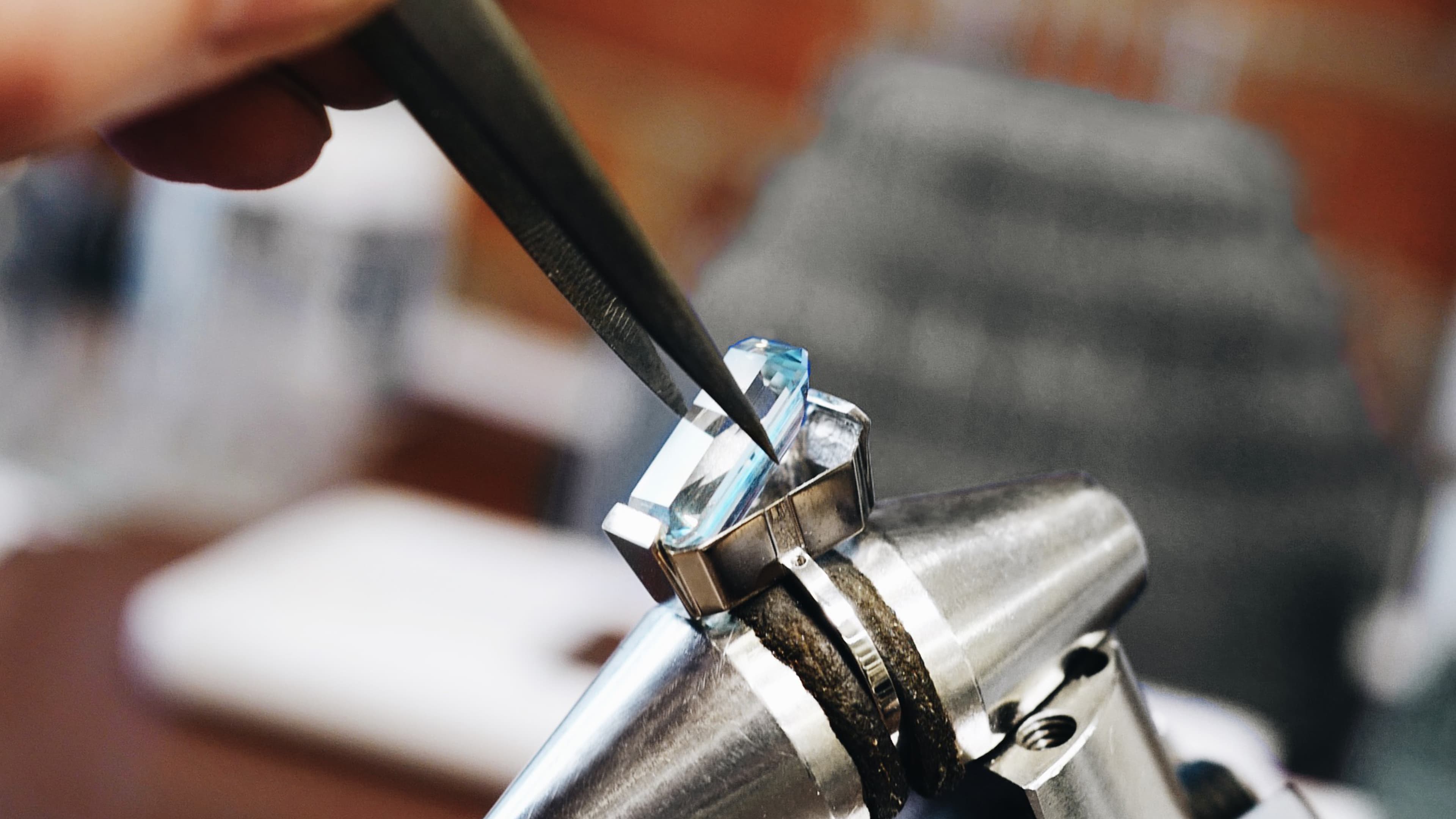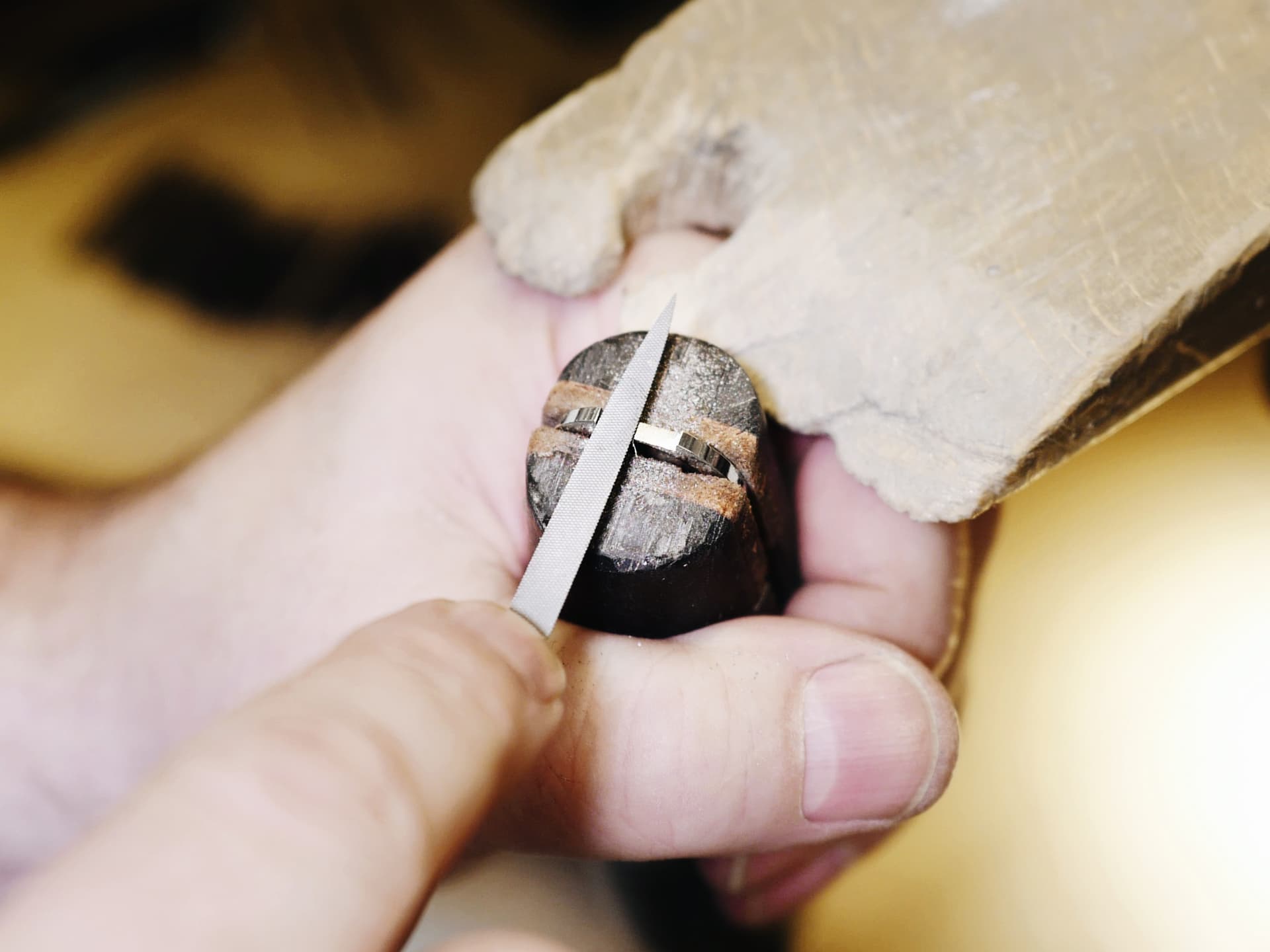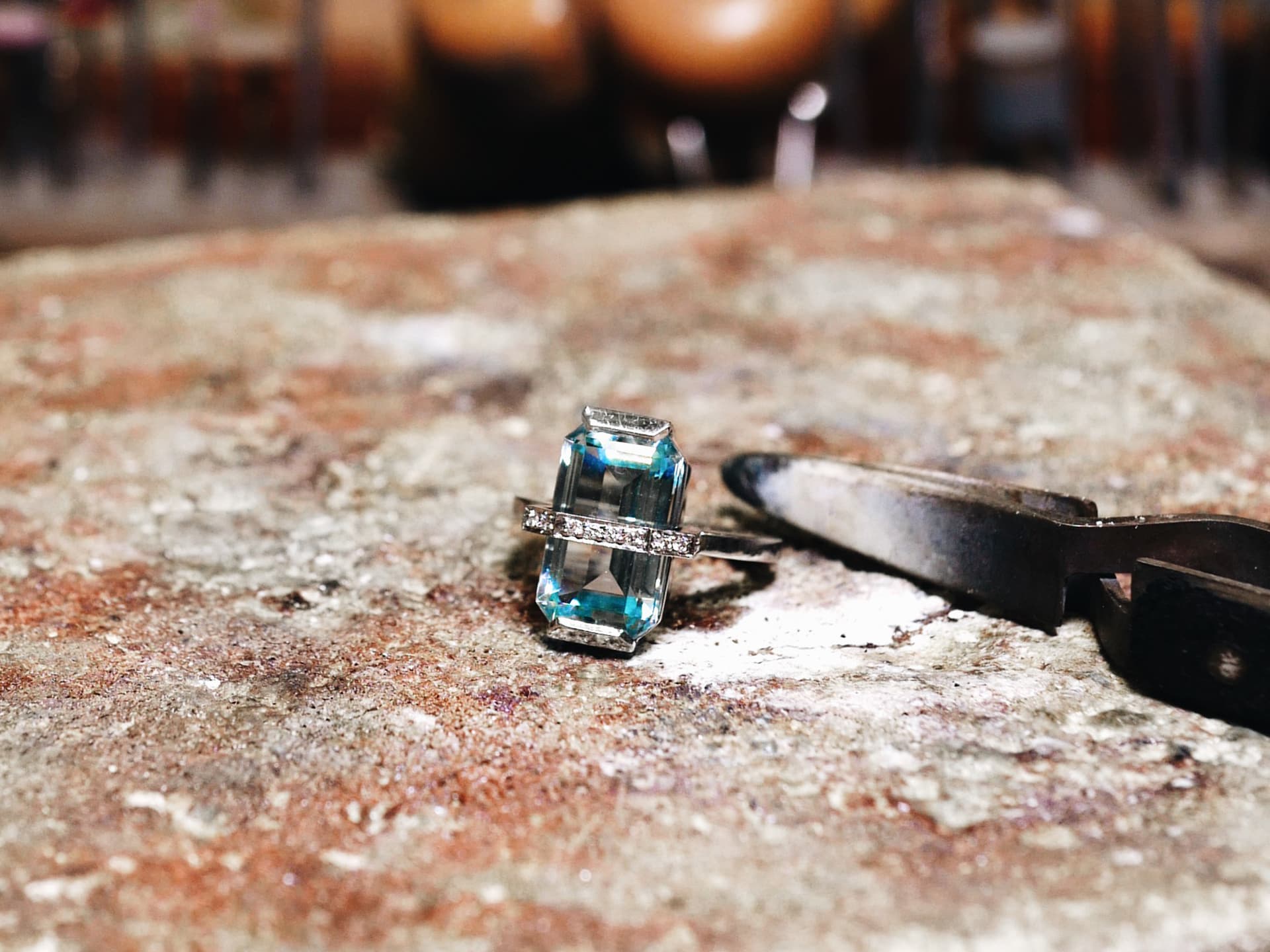Ostoskori
Lyhennys 0 Tuote kärryssäsi
Kieli ja toimitus
Valitse kieli ja toimitusmaa nähdäksesi oikeat hinnat, toimitusajat ja toimituskulut.
Kieli ja toimitus
The making of the Bend over
Moni sormuksemme syntyy tilauksesta kultaseppien toimesta Tukholman ateljeessamme. Seuraa todellisen unelmasormuksen matkaa – lähde mukaan ikonisen Bend over -cocktailsormuksen syntysijoille.

“Bend over and you might get it” – Efva Attling
Timanteilla tai jalokivillä (tai molemmilla) koristellut statement-sormukset ovat varmasti äärimmäinen vallan symboli. Bend over -mallistomme esittelee yhden version tällaisesta power-symbolista. Värikkäässä mallistossa on useita sormuksia, joissa on suurempi jalokivi sekä jalokiven yli kaartuva, timanteilla peitetty nauha.
Malliston ainutlaatuinen muotoilu ja röyhkeä nimi ovat herättäneet paljon huomiota. Efva valitsi nimen pääasiassa kuvaamaan jalokiven päälle taivutettua tunnusomaista nauhaa. Nimi tarjoaa kuitenkin muiden Efvan mallistojen tavoin mahdollisuuden erilaisiin tulkintoihin, jotka käyttäjä voi kehittää omassa mielessään. Näin käyttäjä pystyy muodostamaan koruun henkilökohtaisen suhteen.
Kultaseppämme valmistavat malliston cocktailsormukset Tukholman ateljeessamme. Vieraile kanssamme ateljeessa, jossa kultaseppämme kertovat yhden suosituimmista koruistamme, akvamariinia ja valkokultaa sisältävän Bend over ring -sormuksen, tuotannosta.

“Bend over and you might get it” – Efva Attling
Timanteilla tai jalokivillä (tai molemmilla) koristellut statement-sormukset ovat varmasti äärimmäinen vallan symboli. Bend over -mallistomme esittelee yhden version tällaisesta power-symbolista. Värikkäässä mallistossa on useita sormuksia, joissa on suurempi jalokivi sekä jalokiven yli kaartuva, timanteilla peitetty nauha.
Malliston ainutlaatuinen muotoilu ja röyhkeä nimi ovat herättäneet paljon huomiota. Efva valitsi nimen pääasiassa kuvaamaan jalokiven päälle taivutettua tunnusomaista nauhaa. Nimi tarjoaa kuitenkin muiden Efvan mallistojen tavoin mahdollisuuden erilaisiin tulkintoihin, jotka käyttäjä voi kehittää omassa mielessään. Näin käyttäjä pystyy muodostamaan koruun henkilökohtaisen suhteen.
Kultaseppämme valmistavat malliston cocktailsormukset Tukholman ateljeessamme. Vieraile kanssamme ateljeessa, jossa kultaseppämme kertovat yhden suosituimmista koruistamme, akvamariinia ja valkokultaa sisältävän Bend over ring -sormuksen, tuotannosta.


Ateljeen sisälle tulvii valoa suurista ikkunoista, ja on kiehtovaa päästä näkemään kaikki työkalut ja koneet tosielämässä. Ensimmäinen askel sormusta valmistettaessa on sormusrungon luominen. Sen voisi sanoa olevan itse sormus. Ns. valssaimessa metalli muutetaan oikeisiin mittoihin, jotka ovat yleensä hieman lopullista mittaa suurempia, jotta sormusta voidaan viilata ja hioa myöhemmin. Kultaseppä suoristaa sormuksen pehmentämällä ja kuumentamalla materiaalia ja tasoittelee sen sitten vasaralla. Sitten toinen pää sahataan pois ja viilataan siten, että sivusta tulee suora. Metallipala mitataan, jotta saadaan sormuksen oikea koko, jonka tässä tapauksessa tulisi olla 17,5 mm. Tämän jälkeen metalliin leimataan nimileima ja allekirjoitus.
Saadakseen metallikappaleen sormuksen muotoon kultaseppä taivuttelee pihdeillä molemmilta puolilta ja takoo sitten vasaralla, kunnes päät osuvat yhteen. Tämän jälkeen liitos sahataan ja juotetaan yhteen. Sitten sormus kierretään sormuskapulaan ja sitä taotaan muovivasaralla pyöreäksi.

Ateljeen sisälle tulvii valoa suurista ikkunoista, ja on kiehtovaa päästä näkemään kaikki työkalut ja koneet tosielämässä. Ensimmäinen askel sormusta valmistettaessa on sormusrungon luominen. Sen voisi sanoa olevan itse sormus. Ns. valssaimessa metalli muutetaan oikeisiin mittoihin, jotka ovat yleensä hieman lopullista mittaa suurempia, jotta sormusta voidaan viilata ja hioa myöhemmin. Kultaseppä suoristaa sormuksen pehmentämällä ja kuumentamalla materiaalia ja tasoittelee sen sitten vasaralla. Sitten toinen pää sahataan pois ja viilataan siten, että sivusta tulee suora. Metallipala mitataan, jotta saadaan sormuksen oikea koko, jonka tässä tapauksessa tulisi olla 17,5 mm. Tämän jälkeen metalliin leimataan nimileima ja allekirjoitus.
Saadakseen metallikappaleen sormuksen muotoon kultaseppä taivuttelee pihdeillä molemmilta puolilta ja takoo sitten vasaralla, kunnes päät osuvat yhteen. Tämän jälkeen liitos sahataan ja juotetaan yhteen. Sitten sormus kierretään sormuskapulaan ja sitä taotaan muovivasaralla pyöreäksi.

Nyt sormus viilataan mahdollisimman lähelle lopullista kokoa. Koru mitataan, ja sitä on ehkä puristettava venytyslaitteella tarkan koon saavuttamiseksi. Tässä nimenomaisessa sormuksessa on ns. bezel-istutus, ja kun paikka merkitään nyt sormusrunkoon, kehä voidaan myöhemmin kiinnittää jalokiven asennuskohtaan. Tämän jälkeen kultaseppä poraa sormusrunkoon kaksi reikää myöhemmin tehtävää timanteilla koristellun nauhan kiinnitystä varten.
Nyt on aika kiinnittää kehä sormusrunkoon. Se tapahtuu juottamalla. Juottaminen on todellista taidetta, joka vaatii paljon harjoittelua ja tarkkuutta. Kun kehä on kiinnitetty, on aika asettaa akvamariini. Kultaseppä vasaroi varovasti jalokiven päälle sen sivuilla olevat pienet metallikappaleet eli kruunun, kunnes kivi on paikoillaan.
Jalokivikoruissamme on erilaisia hiontoja, ja Bend Over -sormuksissa jalokivi on hiottu yhdellä suosituimmista tyyleistä – smaragdihionnalla. Tällä tavoin hiottu jalokivi ei kimaltele samalla tavalla kuin esimerkiksi briljanttihiottu, mutta se heijastaa valoa usein dramaattisemmin. Jalokiven kaunis sininen väri tulee raudasta. Se muuttuu kestäväksi, kun se kuumennetaan noin 400 celsiusasteeseen. Monet uskovat, että jalokivet sisältävät väristä riippuen tietyntyyppisiä energioita ja että niihin liittyy erilaisia viestejä, joita on käytetty vuosikymmeniä parantamiseen ja taikavoimaisiin tarkoituksiin. Akvamariinin sanotaan vahvistavan.

Nyt sormus viilataan mahdollisimman lähelle lopullista kokoa. Koru mitataan, ja sitä on ehkä puristettava venytyslaitteella tarkan koon saavuttamiseksi. Tässä nimenomaisessa sormuksessa on ns. bezel-istutus, ja kun paikka merkitään nyt sormusrunkoon, kehä voidaan myöhemmin kiinnittää jalokiven asennuskohtaan. Tämän jälkeen kultaseppä poraa sormusrunkoon kaksi reikää myöhemmin tehtävää timanteilla koristellun nauhan kiinnitystä varten.
Nyt on aika kiinnittää kehä sormusrunkoon. Se tapahtuu juottamalla. Juottaminen on todellista taidetta, joka vaatii paljon harjoittelua ja tarkkuutta. Kun kehä on kiinnitetty, on aika asettaa akvamariini. Kultaseppä vasaroi varovasti jalokiven päälle sen sivuilla olevat pienet metallikappaleet eli kruunun, kunnes kivi on paikoillaan.
Jalokivikoruissamme on erilaisia hiontoja, ja Bend Over -sormuksissa jalokivi on hiottu yhdellä suosituimmista tyyleistä – smaragdihionnalla. Tällä tavoin hiottu jalokivi ei kimaltele samalla tavalla kuin esimerkiksi briljanttihiottu, mutta se heijastaa valoa usein dramaattisemmin. Jalokiven kaunis sininen väri tulee raudasta. Se muuttuu kestäväksi, kun se kuumennetaan noin 400 celsiusasteeseen. Monet uskovat, että jalokivet sisältävät väristä riippuen tietyntyyppisiä energioita ja että niihin liittyy erilaisia viestejä, joita on käytetty vuosikymmeniä parantamiseen ja taikavoimaisiin tarkoituksiin. Akvamariinin sanotaan vahvistavan.